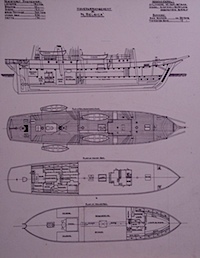This website is no longer updated, please go to our new website.
Research > Typical research:
Belgica

On 16 August 1897, a Belgian navy captain Adrien de Gerlache left Antwerp for the Antarctic with an international crew on a robust three-master, the Belgica. The expedition was the first Antarctic expedition of a purely scientific nature. It was also the first to spend a winter in the austral polar night, and to make extensive use of photography. On 10 March 1898, and for twelve months, the Belgica was imprisoned in the ice. The ice-bound ship drifted over 3200 kilometers and was finally released on 14 March 1899 after much effort. The expedition returned with an important scientific harvest and a complete annual cycle of observations, which are still relevant for scientific comparisons today. The scientific data covered many fields : bathymetrical and hydrological soundings, numerous botanical and zoological samples, a large amount of oceanographical, meteorological, geomagnetic, glaciological and geological observation data. Beside nine Belgians, the crew consisted of six Norwegians (incl. Roald Amundsen), two Poles (incl. the scientist Henryk Arctowski), one Romanian (the scientist Emil Racovitza) and an American (Dr. Med. Frederick Cook, explorer of the North Pole).
Interest in the expedition has been significantly rekindled since Norwegian divers the discovered the wreck of the Belgica near Harstad, Norway. A Belgica Society was created in Ostend in 2006, with the aim of trying to salvage the wreck, or at least significant parts of it, for display in an exhibition area in the vicinity of Antwerp, the city from where the Belgica left on its epic journey.
In connection with the rescue initiative, the New Belgica vzw was established in August 2007 - exactly 100 years after the departure of the Belgica from Antwerp. A project was initiated to build a replica of the Belgica at the workshops of De Steenschuit, which are specialized in traditional shipbuilding. The construction will last approximately five years (2009-2013). It was officially launched on Sunday, 9 September 2007, at a wharf in Noeveren, Boom, with the unvailing ceremony of the keel and a section of the hull by the Minister-President of Flanders, the Honourable Kris Peeters. The project enjoys the patronage of Her Majesty Queen Paola of Belgium and the Governor of the Province of Antwerp. The Ministry of Defence, the Flemish Regional Government and a number of important private companies and banks are among the sponsors. The Universities of Ghent and Liege provide expertise in the planning and construction stages, along with several technical firms. The reborn three-master Belgica would become an ambassador-ship to stimulate public awareness regarding climate change worldwide and offer a platform for renewed expeditions to the polar regions.
More information can be found on the website of De Steenschuit.
| Sitemap |


